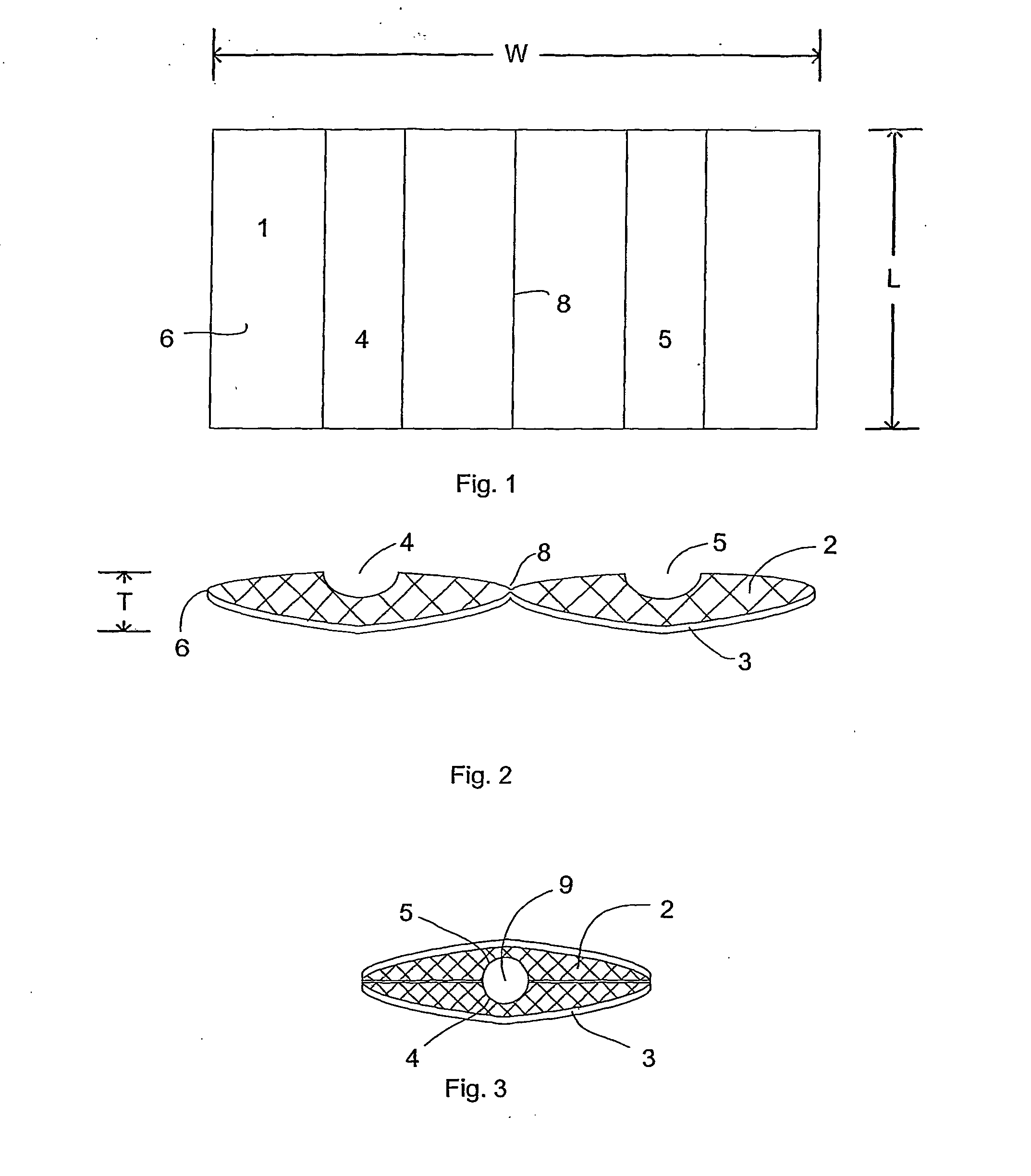Endoscope cleaning pad
a cleaning pad and endoscope technology, applied in the field of cleaning devices and methods, can solve the problems of high endoscope cost, major difficulties, and time-consuming procedures
- Summary
- Abstract
- Description
- Claims
- Application Information
AI Technical Summary
Benefits of technology
Problems solved by technology
Method used
Image
Examples
example 1
[0038]
% w / wNon-ionic surfactant (e.g. nonyl phenol ethoxylate)10.0Anionic surfactant (e.g. linear alcohol sulphonate)10.0Preservative (e.g. magnesium thionate)0.15Humectant (e.g. Calcium chloride hexahydrate)4.5Protease10.0Alcalase3.5Cellulase1.0Lipolase0.7Propylene Glycol12.0Tap water to 100
[0039] The activity units for the enzymes used in Example 1 are:
Protease 16 KNPU / gm or 5 AU / gmAmylase 300 KNU / gmCellulase1000 ECU / gmLipase 100 KLU / gm
[0040] Those skilled in the art will appreciate that enzymes are supplied on the basis of activity units rather than protein concentration, and that the units used to define activity differ depending upon the specific chemistry of the enzyme involved. However, those skilled in the art will be familiar with reformulating enzymes of different activity and will be readily able to adapt the formulations of the present invention according to the specific circumstances.
example 2
[0041] Example 2 is identical to example 1 except that 4.5% w / w glycerine is substituted for Calcium chloride hexahydrate.
[0042] The surfactants, preservatives and enzymes can be varied in composition and quantity in accordance with formulation and compatibility requirements. Importantly, the composition contains a humectant. Suitable humectants may for example be calcium chloride, sodium chloride, glycerine, borax, ethylene glycol or such like. The humectant may also be a surfactant.
[0043] One or more of the pads is packed together in a package which may be water permeable This together with the presence of the humectant serves to keep the composition sufficiently moist to avoid dry particles of enzyme from being released into the air when the package is opened. Optionally, the formulation may contain a disinfectant compatible with the enzymes, for example a quaternary ammonium compound.
[0044] The loading of composition on the fabric, wipe or sponge can be varied as desired. The...
PUM
 Login to View More
Login to View More Abstract
Description
Claims
Application Information
 Login to View More
Login to View More - R&D
- Intellectual Property
- Life Sciences
- Materials
- Tech Scout
- Unparalleled Data Quality
- Higher Quality Content
- 60% Fewer Hallucinations
Browse by: Latest US Patents, China's latest patents, Technical Efficacy Thesaurus, Application Domain, Technology Topic, Popular Technical Reports.
© 2025 PatSnap. All rights reserved.Legal|Privacy policy|Modern Slavery Act Transparency Statement|Sitemap|About US| Contact US: help@patsnap.com


